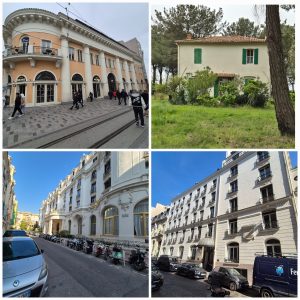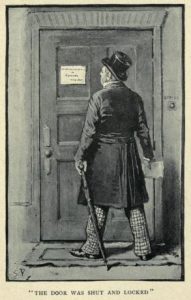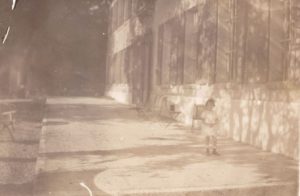I have always enjoyed reading letters and other forms of correspondence. Reading another person’s letter is like eavesdropping on one of their personal conversations. I think it is this which attracts me to letters over narrative. Narrative tells the reader something, letters speak the same something in the writer’s voice. It is the difference between reading:
“The view from her window framed a few tree branches wearing their autumn colours, gently bouncing in the breeze, distorting the view of the hotel’s swimming pool on the other side of the road.”
Or:
“Dear Mom, from my living room window I can see the prettiest leaves hanging seemingly in midair, although I know they are attached to the overgrown tree at the front of the apartments. The leaves have turned the colours of autumn, although some of their summer green is desperately trying to hang on. As they wave up and down in the breeze I get a distorted view of the swimming pool across the road, with its empty table and chairs indicating winter has indeed begun.”
Both pieces describe the scene outside of my window but, if I were the reader instead of the writer, I would always prefer the second.
Some of my favourite books have been based on letters. 84 Charing Cross Road by Helene Hanff, for example, which was based on a twenty-year correspondence between the author in New York and one of the buyers of a bookshop in London. The letters are quaint, full of life and interspersed with both comical and human touches, giving us an insight into the lives of the correspondents and the time they lived in.
In my research for my own manuscript, I came across a book written by Kerstin Lieff, entitled “Letters from Berlin”. In it she writes about her mother’s experience of World War II and includes letters her mother wrote during the final days of the war. This is a truly poignant book and one of the few I have found which is written from the German perspective.
Another book I discovered in my quest to know more about Germany and the lead up to WWII, was “Address Unknown” written by Kathrine Taylor in 1938. In letters written from 1932 to 1934, between a Jewish art dealer in San Francisco and his business partner who returned to Germany in 1932, the author has attempted to expose the dangers of Nazism.
While cleaning up my father’s house after his death I found many letters written to him by various family members, friends and other people I do not know, as well as copies of letters he wrote to others. Most of them are in German so I envisage spending numerous hours in translation. But it doesn’t matter. What matters is the content of the letters and what they can tell me about a man who I only knew in the present tense. I look forward to uncovering his past and finding out more about him and his life before me.



